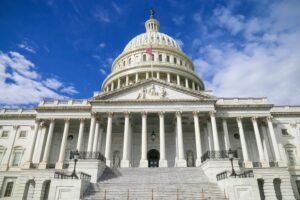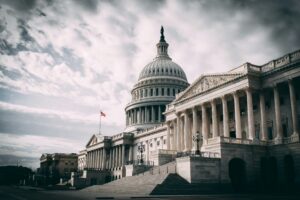Disclaimer: Many of the developments discussed below are fluid and may change rapidly. The information is accurate as of 12:00pm EDT on December 18, 2025.
Healthcare
The Senate GOP failed to advance a bill aimed at mitigating rising health insurance premiums for Americans. The proposal was to create health savings accounts (HSAs) for people who buy their health insurance on the Affordable Care Act (ACA) marketplace.
The legislation needed 60 votes to advance, but all Democrats were joined by Senator Rand Paul (R-KY) to vote “no” in a 51-48 vote. Later in the week, the House of Representatives advanced a Democratic-led proposal to extend enhanced Affordable Care Act premium subsidies for three years, largely along party lines.
The House vote sets up a direct contrast with Senate Republicans’ approach and tees up continued negotiations as healthcare affordability remains intertwined with broader shutdown and budget talks.
Takeaway: Despite the prominence of healthcare affordability in shutdown-related negotiations, Congress has made little substantive progress on addressing rising insurance premiums, with the House and Senate advancing competing, partisan approaches.
NDAA
The National Defense Authorization Act (NDAA) was approved by a vote of 312-112 in the House and 77-20 in the Senate. The legislation authorizes approximately $900 billion in defense spending and now sits at the President’s desk for his signature.
The bill repeals certain sanctions on Syria, restricts the withdrawal of U.S. service members stationed in Europe, places new limits on U.S. investment in China, and authorizes military assistance to Ukraine.
The House vote follows weeks of bipartisan negotiations and internal GOP tensions, including public criticism from Representative Elise Stefanik (R-NY-21), who faulted Speaker Mike Johnson for excluding a provision that would have required the FBI to notify Congress when opening counterintelligence investigations involving federal candidates.
Ahead of the Senate vote, Senate Armed Services Committee Chair Roger Wicker (R-MS) emphasized the NDAA’s bipartisan legacy, noting that this marks the 65th consecutive year Congress has sent a defense authorization bill to the President.
Takeaway: The NDAA is headed to the President for signature, easing immediate pressure on defense policy and funding, even as Speaker Mike Johnson continues to face internal divisions over remaining appropriations bills
Redistricting
The Supreme Court weighed in on the Texas redistricting battle and allowed Republicans to use a re-drawn map of Texas for the 2026 mid-term elections that is backed by President Trump and the GOP. This overturns a decision by the lower court that found the new map unconstitutionally sorts voters based on race.
Texas Republicans drew the state’s new map to give the GOP five additional seats in the House of Representatives. California, Missouri, and North Carolina also created maps that add new Congressional seats.
The redrawn maps are facing court challenges in California and Missouri. A three-judge panel allowed the new North Carolina map to be used in the 2026 elections.
- The redistricting race is heavily influencing some members of Congress to pursue new political positions. Representative Jasmine Crockett (D-TX-30) announced that she will run for the Senate in Texas which will set off a competitive Democrat primary with state Representative James Talarico (D-TX-50).
The Indiana State Senate failed to pass a redistricting bill that would create a new Congressional voting map and eliminate two House Democrat seats. The potential map failed in a 19-31 vote in the Senate as 21 Republicans and 10 Democrats voted no.
The Senate Republicans that voted against the map faced scrutiny by President Donald Trump and Indiana Governor Mike Braun (R). Governor Braun stated that he would help the President primary Republican state lawmakers that voted against the redistricting bill.
Takeaway: Indiana’s Senate rejection of new Congressional maps tests the influence of President Trump and may lead other states to push back against redistricting efforts. In addition, the elimination of certain Congressional districts may cause Representatives to leave their seats and pursue other offices during the 2026 mid-term election.


